

Read the previous part of this blog entry in The walk to the town of Otates.
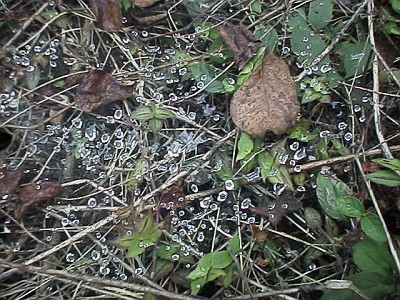
In order to get to the hill of Otates we had to follow a dirt road to the left of the main street. At first there were houses to the left and the right, but after a while we were walking between low trees, shrubs, and big cactuses here and there.
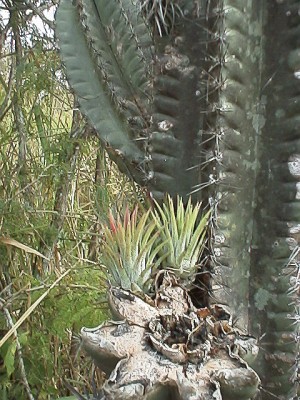
When we spotted the Cerro de Otates, we wondered how the picture in the "Ruta de la Niebla" was taken. Certainly not from where we were standing, since it looked very high. In the book it looked like a climb of around 50 meters. But the hill we saw was high, very high.
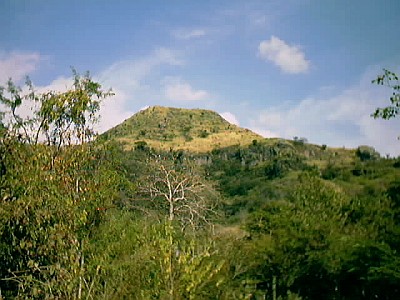
When I looked under a stone and saw a cockroach running away I joked to Esme that I found one of her "friends": she really doesn't like roaches.
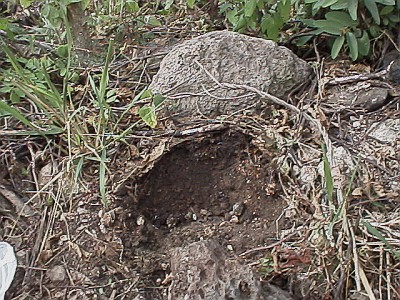
When I looked again I noticed something else... a small scorpion, and better: one I hadn't seen before. It looked to me like a Diplocentrus species, but I am an absolute beginner at scorpion identification.
Edit: later it turned out that I was correct, the specimen I found was identified by Oscar F. Francke as and adult female Diplocentrus bereai.

I captured the small scorpion and took pictures of the habitat and surroundings. I had already said a few times to Esme that I expected to find brown bark scorpions, Centruroides gracilis, since the environment reminded me a lot of when we walked near the town of Campanario some time ago, where we saw about 10 specimen of Centruroides gracilis.
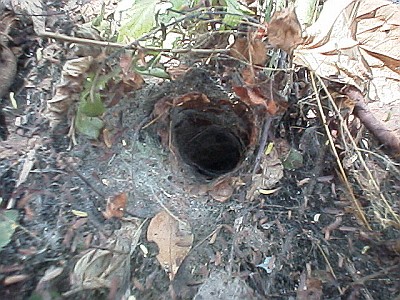
We both checked some stones nearby, but no more scorpions. We did see several very big spiders, and I took a few close up pictures of one.
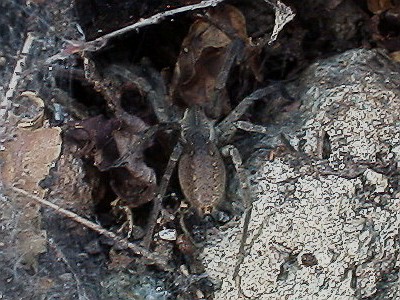
While we walked, we heard now and then a very loud noises, made by donkeys. At one time, when I was looking under a stone, it really scared me. It sounded like a weird scream, almost human.
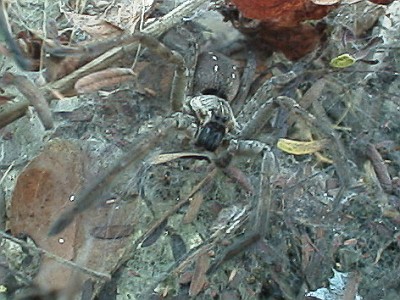
We kept following the dirt road, which was going now a bit more down, and after a short walk we saw to our left what Esme called a forest of cactuses.

There were many stones, so we started looking. I said (again) to Esme that I was sure that we were going to find Centruroides gracilis, because (again) the stones were in a similar surrounding (tall grass) as we had seen near the town of Campanario.
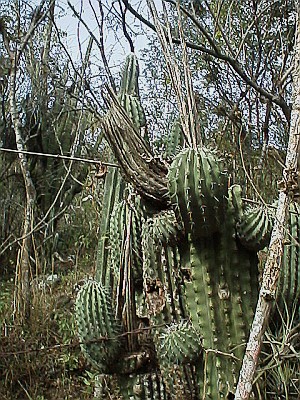
Read the next part of this blog entry in More scorpions: Centruroides gracilis.